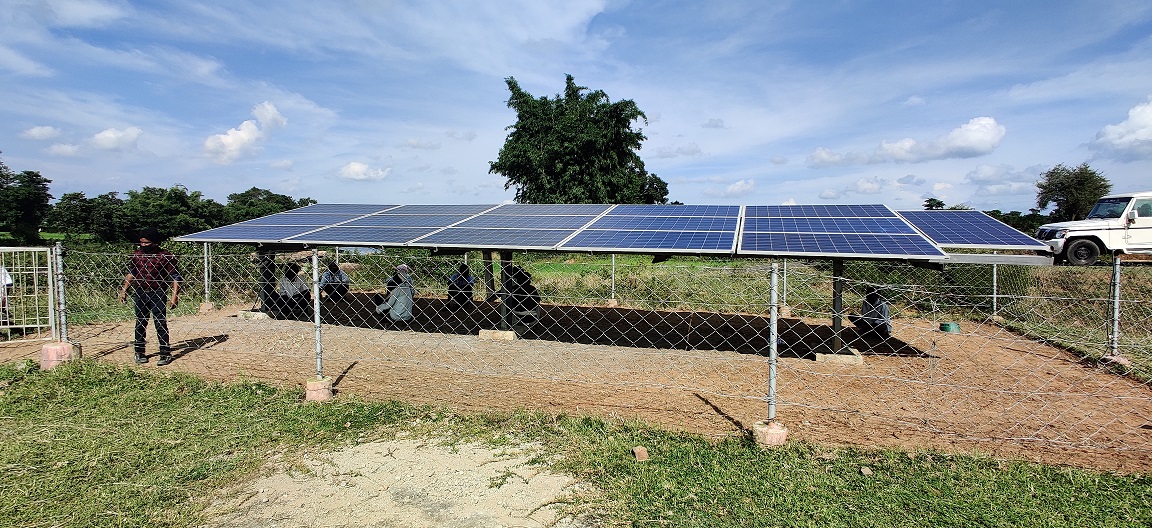Community-managed micro-irrigation systems: Public investment for energy access

For a state with high out-migration rates, Jharkhand is ripe with potential to empower farmers with sustainable energy resources.
In 2017, it was reported that until the early part of the decade, Jharkhand had lost 5 million of its working population to migration out of the state. Loss of traditional livelihoods means 5% of the state’s population continues to migrate every year.
Soso village, part of Angara Block, is about 40 km away from the capital city of Ranchi in Jharkhand. As of early 2019, Nawagarh comprises five such villages with a collective population of 5,500 people.
Irrigation, migration, and livelihoods
The farmers of Soso village always relied on the elusive monsoon season or unreliable power supply to irrigate and farm their fields. For the rest of the year, they would migrate in search of employment to supplement this seasonal livelihood. Those who could not migrate worked as construction laborers.
Geographically, Soso is located on the banks of the perennial Subarnarekha River. But lifting its water to the fields for irrigation required reliable electricity, which was not easily accessible to farmers with small landholdings.
Welcome, electricity, but conditions apply
During the 1990s, agriculture in Soso transformed owing to grid electricity-based lift irrigation systems installed by Bihar Hill Areas Lift Irrigation Corporation (BHALCO). It positively impacted the cultivation patterns in the village.
But the path was thorny--electricity supply was erratic and most of it arrived at night. The farmers found it difficult to manage this night schedule. It was also risky, because snake bites were common.
Another challenge the farmers faced was of not being able to check the level of water in their fields, in the darkness. They would then end up with excessive water which affected the crop yield, reducing farm productivity. These uncertainties discouraged the farmers to invest in a second cropping cycle.
A right-sourced solution
Farming changed for these villagers after 2018. A solar-run irrigation system was installed with support from the Jharkhand State Livelihoods Promotion Society (JSLPS). This 5 HP solar run irrigation system caters to 16 farmers with fields across 52 acres.
This has been life changing for farmers. Farming is now done across seasons, including summer. Reliable electricity supply and irrigation facilities have made farmers confident. They are more involved in agriculture and are also diversifying the production of crops—leading to higher incomes. From cultivating only paddy crops, farmers now grow cucumber, watermelon, green peas, tomato, green chili, maize. The water is also effectively utilized for irrigation by several families as they collectively irrigate their fields.
For areas with rolling topography and high rainfall, such small-scale community managed irrigation systems, running on reliable renewable energy, can be of enormous help to farmers with small land holdings, than supply-driven one-size fits all approaches, that was been the template in the past.
Reliable electricity and secure livelihoods
The Transform Rural India Foundation (TRIF) worked closely with the Government of Jharkhand to mobilize financial resources for this solution. The active involvement of water user groups (WUG) is ensured in partnership with the State Rural Livelihood Mission. The user groups are responsible for the operations, maintenance and security of the entire system. Vijay, a WUG member, used to work as a driver in Ranchi as agriculture was never enough for his family’s sustenance. But after this irrigation facility became functional, he decided to engage full time in farming on his 60 decimals of land. Today, he can farm across seasons, his family enjoys healthy nutrition and earns well by selling the surplus produce.
Future focus
TRIF has setup a dedicated State Irrigation Execution Cell (SIEC) within the government for efficient and smooth execution of irrigation systems across 6 blocks in the state. In two years’ time, about 550 such systems have been installed and made operational. 700 such small irrigation systems are expected to be running on clean energy in 6 blocks by the end of 2020.
*February 2017; https://timesofindia.indiatimes.com/city/ranchi/migration-from-state-highest-in-country-economic-survey/articleshow/57070016.cms

